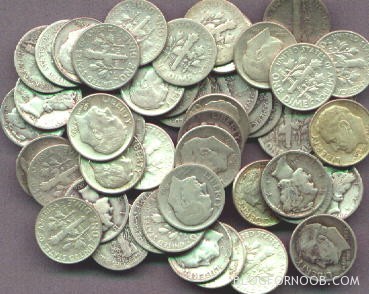For investors who want to capture the coming move in silver, buy silver coins is still one of the best options.
Here’s the catch…
Like gold, investing in silver is a great hedge against inflation and financial turmoil alike. It’s why demand for silver is increasing at an astonishing rate.
In fact, says Money Morning Global Investing Strategist Martin Hutchinson, ”
If silver were to match its 1980 peak, adjusted for inflation, it could climb as high as $150 an ounce.”
For savvy investors who hold physical silver in bars or coins, that move would deliver roughly a 328% gain from today’s spot-prices.
Investors can also tap the silver market by purchasing “junk coins,” as opposed to newly minted bullion issues.
Prior to 1965, U.S. dimes, quarters and half dollars were minted using 90% silver and 10% copper. These coins circulated as legal tender and suffered the normal wear and tear of daily use.
As such, they have no value to coin collectors and are commonly referred to as “junk coins.”
However, because of their silver content, these “worthless” collector coins have great value to investors – especially given today’s prices. For example, a “junk” Roosevelt dime minted between 1946 and 1964 contains 0.07234 ounces of silver, giving it a “melt” value of roughly $2.17.
That’s not bad for a product you could have originally purchased for 10 cents.
Similarly, a Washington quarter minted between 1932 and 1964 has 0.18084 ounces of silver, making it worth $5.43 today, and a Ben Franklin half dollar, minted from 1948 to 1963, contains 0.36169 ounces of silver, giving it a current melt value of $10.85.
Even older silver dollars – such as the Morgan dollars minted from 1878 to 1921 – which generally carry a minimum collector value around $18 or $19 for even the most common dates, are now worth $24 to $25 when melted down for the 0.77343 ounces of silver they contain.
 Blog For Noob Random thought of a Noob Blogger
Blog For Noob Random thought of a Noob Blogger









